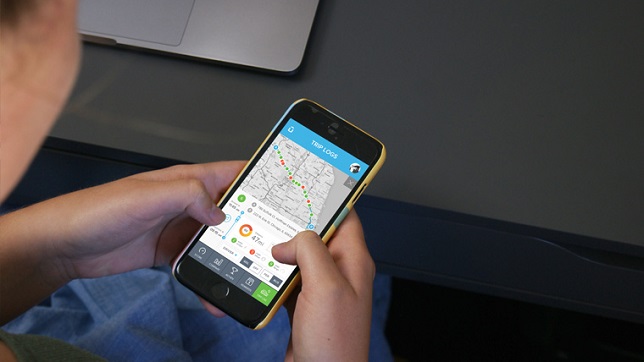Navigating through the minefield of telematics

Data enrichment
Data is the key element in ensuring a successful telematic insurance strategy together with automated processes to maximise data in real time. Predictive analysis with both driver & vehicle insights is vital to minimise loss ratios. So I will attempt to strip down all the myths and complexities and demonstrate the many models available to successfully implement an insurance telematic scheme.
Telematic questions
The main questions most of you will be asking when looking to adopt telematics, whether you’re an insurer or one of the many ancillary services across the automotive sector including OEM’s, Fleets, Brokers, supplementary automotive services etc.
- How do I decided on the data that is required?
- What options do I consider on collecting and calculating the data for insurance underwriting?
- How can I benefit from my data for claims management?
- What hardware technology do I use?
- Can telematics be profitable?
- Will I have to take on extra resources to manage the data?
- What’s in it for my policyholders?
- Is there a consumer market for my telematic scheme?
These are the many issues most frequently asked of me when discussing implementing telematics for insurance.
I always recommend that you spend time first developing and producing your telematic strategy. This will establish the data you initially require forming your analytical approach which will provide your strategic objectives, highlighting the key drivers for your proposal. Don’t forget to consider any potential future data that might be valuable at a later stage of your project and build this into your model and hardware. Collecting future data from a device can only be possible if the device is data future proof. This will save time and money if it can facilitate the data at a later stage…then select the technology hardware to fit your proposed data model. We are all familiar with telematics and the phrase ‘Black Box’ but you will find different insurance solution providers all have a different take on hardware business models, data collection and an end goal strategy. It’s a mine field of who, what and how to locate the correct supplier, data and to ultimately build a successful solution.
What do Insurers consider as risk?
All insurers evaluate risk (the potential to cause financial loss if it were to occur). Traditional motor insurance is based on a number of risk factors calculated on vehicle type, postal code, occupation, age, use of vehicle and a proposed mileage. As opposed to Telematic insurance which collects and offers a larger pool of real time driver/road data to evaluate, develop and underwrite a proposition… elements like driving behaviour, roads driven, time driven, miles driven, key indicators of potential accidents etc. The more tools and knowledge you can supply the insurer the better they are prepared to quantify the risk against the probability of loss. This will ultimately determine premiums.
Just one example… some devices data can furnish real time ODO, therefore mitigating against policyholders guesswork on their intended declared annual mileage (initial proposal form question) and against their actual annual driven mileage. I have a theory about the total mileage on an insured book which is probably 2x to 3x + higher than they have projected will occur over the year. This will increase road risk and ultimately a potential overall increase of accidents and claims costs. Hence why UBI (Usage Based Insurance) has been taken to quickly in the marketplace by both consumer and insurers.
Underwriting is about better understanding your risk and if a telematic data can improve certain sectors of motor insurance then this should revert into more competitive premiums.
The birth of telematic insurance…20 years ago
So lets go back 20 years when I remember that telematics was frowned upon by insurers and hearing the words ‘it will never be mainstream’ or ‘part of any insurance proposition’ as it’s too costly to include in any insurance product. If we drive forward to today since I first adopted telematics there isn’t an insurer who either hasn’t a telematic strategy/proposition or is at least looking to implement the concept. Hardware has come down in costs and so has the size of the devices. Also data charges has also been driven down as consumers use mobile data as a consumable item.
Its almost 15 years ago that I conceptualised and pioneered young driver telematic insurance and data played a very important part of reducing policyholders’ premiums. Hardware costs were expensive but underwriting benefits proved successful along with the reduction of accidents and fatalities…widespread amongst young first-time drivers. Today telematics is playing a big part of insurers accident prevention programmes by alerting drivers of bad driving styles (harsh braking/accelerating), feeding back this information and seeing an improvement in reducing accident frequency, as the most widespread cause of UK road accidents is driver error.
Technology now provides us with an array of different business models with all suppliers stating theirs is the best, most credible, most reliable and most popular. The simple fact is its ‘horses for courses’. Yes some devices are more accurate in their data sets than others… for example, OBD devices which are plugged into the vehicles on board computer, provide DTC’s (Diagnostic Fault Codes). Any non OBD devices like stand-alone mobile apps for example haven’t the capacity or functionality to collect that type of data. But the plus side for certain schemes is there’s no SIM data charges as it utilises the policyholder’s mobile phone for data transfer. Hardwired devices have their benefits with that the device can’t be tampered with easily and the insurer liking the fact that an engineer has sight of the vehicle usually taking a picture of the car and premises for the record. Also Hardwired is more preferred in fleet vehicles as the longevity of the contract absorbs the installation costs. If your just after the basic accelerometer data then yes there is a host of devices from mobile phone apps, 2 wired Battery connected, cigarette lighter, tethered tag to mobile app etc which can all be deployed as a low cost.
So when considering hardware it’s down to your requirements:
- Data required ie Accelerometer data for Driver scoring, FNOL and DTC’s for diagnostics etc
- The actual cost of device/data charges, calculated to be tolerable per policy
- Ease of installation ie Hardwired requires an installation cost whereas self-install devices are fulfilled through the post with plug and play implementation
- Data costs ie Some devices are installed with a SIM which attracts a monthly service charge to include air time and the data collected, whereas mobile app solutions use the data allowance on the policyholders phone
- What is my long-term strategy to collect data for my business plan?
The selection of technology hardware devices available to you are now immense with many TSP’s (Telematic Service Providers) growing year on year.
So which model is suitable for my scheme? But it’s not that simple, as with every single sector of the automotive world, you will have a specific requirement for your proposition and customer with this determining the hardware device, data collection and the potential monitisation opportunities.
There are principally two options to your solution choice.
Mobile phone
Mobile phone app models are cheaper and rely on the driver’s data charges to cover the data collected and sent. Also its essential to have the mobile phone in the car, charged or plugged in, enough data plan to transmit and importantly ‘is it in the policyholder’s vehicle’ or ‘another vehicle’. There are certain models which use a tethering tag to ensure it is in the vehicle that’s insured and that gets round the issue but that adds to the expense of the business model. Also there is no connectivity to the vehicles onboard computer.
Hardwired devices
These tend to be the option that most insurers have adopted for telematic insurance schemes like young driver and fleet policies but with the introduction and development of today’s OBD self-plug in which is slowly gaining pace. But in commercial fleet hardwired is still the preferred choice.
There are a load of options and variations on telematic hardware.
- OBD self-install device
- Hardwired – installation required
- 2 wire Battery connected
- Cigarette lighter
- Tag
All the options have pros and cons but it’s generally accepted that to collect live vehicle ODO it’s got to be hardware based model with OBD self-install and hardwired being the most popular options used in the market.
The Tag, 2 wired battery device and cigarette lighter models are not OBD connected and collect no vehicle data nor does the Mobile phone app.
All have their merits but again I will reiterate it’s down to ‘what is your end goal’. What is your companies/insurers direction of travel? Is it:
- To offer compliancy and reduce accidents with claims frequency via identifying, monitoring, controlling and changing your driver’s behaviour through triggers known to modify driver styles.
- To reduce annual premiums by showing your insurer that you are implementing change to your company and to your driver’s risk management approach.
- The facility to offer a UBI scheme ensuring accurate mileage is collected and billed to the customer via real time ODO data.
- To offer young driver insurance and ensure drivers adhere to a set of proven rules and guidelines at a competitive capital cost so to improve loss ratios.
- To provide an insurer with an element of security and risk solution for niche schemes that historically are loss making.
- To provide a dealership inhouse insurance scheme that collects actual true ODO and Diagnostic data for an improved customer experience with extra monitisation opportunities.
Installation partners
Choosing a hardwired device installation supplier can be challenging so ensure that your potential partners match your long-term strategy. Badly fitted installations can be costly. Lost or non-transmission of data due to poor installations can affect your driver profiling which may negatively influence premium calculations to your policyholders as well as FNOL alerts, if that is part of your business model. Make sure that full territory coverage is offered so that installations in far flung areas can be covered. A good knowledge of automotive mechanics and electrical is a must. As is a good contract to include SLA’s and service credits which will ensure a successful partnership. Some installation companies also offer to hold stock as well as a fulfilment solution for self-install devices. This will include postage, packing and support. Several will also provide a full call centre for device assistance and technical support all under your voice branding.
COVID and post UBI popularity
If you look at COVID and what that has done to our driving habits…we drive less now to work and for pleasure. It’s highlighted the lack of miles driven during the lockdowns and consequently some insurers recognised and actually re-imbursed policyholders with a cash back for their reduced miles. Admittedly the lack of miles has converted to less accidents and therefore less claims costs but the principle of ‘usage-based insurance’ (UBI) or even ‘miles-based insurance’ (MBI) has projected providers like technology savvy ByMiles, who provide a UBI policy, to a different level.
Telematic data can confidently support underwriting criteria and collect accurate vehicle data where discounted costs are offered against factual measurements. This can’t be afforded alongside traditional policies where no real time data is collected thus giving telematic insurance a wider opportunity for improved loss ratios.
Viewing data platform
The other element that most TSP’s provide is a software platform to view their data….some even a mobile app for the drivers. This provides aspects of insights and analytics on driver behaviour and vehicle detail but mostly from a fleet management perspective. If you are looking to manage your own data via your own platform/mobile app then ensure your TSP can provide an API data push of data direct to your own servers so you can develop your own customer facing portals. Some TSP platforms offer a data export function so equally an option open to you.
FNOL (First Notification of Loss)
This is where the device triggers and detects an incident (potential accident) and notifications can be sent to multiple individuals ie Fleet Manager, Driver and ancillary services like Accident Management partners etc. Without FNOL alerts the Driver has to make a call to a Accident Centre to declare he has been involved in an accident. This can take hours even days to notify and it’s this delay that increases the claims costs to both insurer and vehicle owner. If a device can offer a real time FNOL detection functionality and activated by the call centre it can save approx. £800-£1000 off the claims cost according to most accident claims management organisations. The quicker all the services can reach the policyholder and vehicle the more control and reduced costs can be achieved. For instance recovery of the vehicle and courtesy car costs can be managed by approved partners controlling overall expenditures.
Algorithms
Data and its risk profiling benefits is only as good as the credibility of the algorithm its been processed through. A badly developed and unproven algorithm will not trigger accurate events that either indicate a poor or good performing driver so destroying the whole premise of telematic data as a risk tool. A well-developed algorithm will offer assumptions based on accurate calculations and therefore end in correct premium estimates.
The same applies to FNOL. A poor algorithm will send to many false positives making it worthless to any conclusion of an incident. ie ‘was it harsh braking or a pot hole which triggered an FNOL notification’.
Some insurers and TSP’s have developed their own algorithms so test your suppliers against actual statistical data before deciding on your telematic partner.
Telematics and it’s future role in Insurance
The simple fact is that telematics is here to stay and how we embrace the technology with its valued data and risk transformation to profitability is the holy grail that we all chase.
With the inclusion of embedded telematics in newly manufactured vehicles and the extension of insurers and new entrant insurtechs developing niche schemes, the insurance world can only benefit from the volume of data now available. This will not only enhance the customer experience but offer the insurance industry methods of data risk analysis for improved products and loss ratios for the benefit of us all.
Author:

John Kowalyk
Managing Director
Box Smart Insurance
One of the UK’s leading pioneers and innovators of telematic insurance having been at the forefront of many innovative products the past 20 years. First in the UK to launch UBI/PAYD, then the earliest Fleet telematic insurance and on to pioneer Young Driver telematic insurance, launching waves of entrant insurers. Now heads up a new insurtech fleet telematic broker.
Published in Telematics Wire




